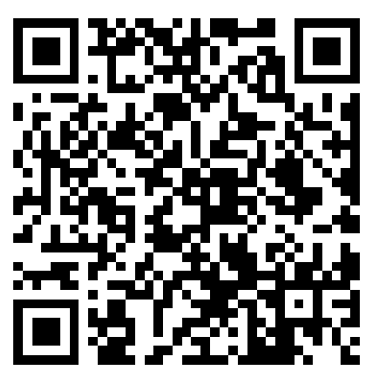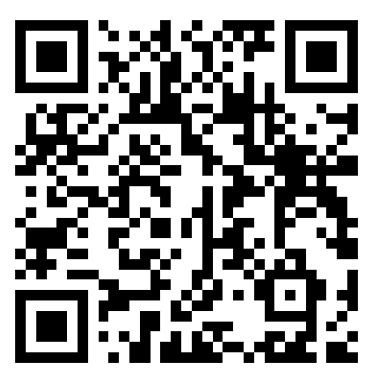Machine Learning in Mineral Prospectivity Mapping: A Comparative Analysis of Algorithm Performance and Application Strategies
Xuan-Ce Wang
6/2/20255 min read


Executive Summary
The integration of artificial intelligence and machine learning technologies in mineral prospectivity mapping represents a significant advancement in exploration methodologies. This analysis examines the performance characteristics and practical applications of various machine learning algorithms in geological exploration, providing insights into their relative strengths, limitations, and optimal use cases. The findings demonstrate that while multiple algorithms show promise, Random Forest consistently delivers superior performance across diverse geological contexts, while neural networks excel in handling complex, nonlinear data patterns.
Introduction
Mineral prospectivity mapping has evolved significantly with the advent of machine learning technologies. Traditional exploration methods, while foundational, are increasingly supplemented by sophisticated algorithms capable of processing vast datasets and identifying subtle patterns that may indicate mineral deposits. This technological evolution has created new opportunities for more accurate, efficient, and cost-effective mineral exploration.
The distinction between conventional machine learning and deep learning approaches presents important considerations for exploration professionals. While deep learning algorithms can handle complex data structures with remarkable accuracy, they require substantial computational resources and large datasets. Traditional machine learning methods, conversely, offer greater interpretability and efficiency for smaller datasets, making them particularly valuable in early-stage exploration projects.
Algorithm Performance Analysis
Random Forest: The Consistent Performer
Random Forest has emerged as the most reliable algorithm across multiple mineral prospectivity mapping applications. This ensemble learning method combines multiple decision trees to create robust predictive models that consistently outperform individual algorithms. The technique demonstrates exceptional user-friendliness, requiring minimal data preprocessing while effectively managing missing values and resisting overfitting.
In comparative studies focusing on lithium potential mapping, Random Forest achieved the highest overall performance metrics when evaluated against various fuzzy-based, multi-criterion decision making, and data-driven techniques. Similarly, in gold prospectivity mapping applications, Random Forest models significantly outperformed traditional weighted-index overlay methods. The algorithm's ability to model complex, multistage nonlinear systems makes it ideally suited for mineral system analysis.
When enhanced with fractal-based features, Random Forest models demonstrate high predictive efficiency and classification precision compared to models trained with raw data. This performance improvement highlights the importance of data representation in algorithm effectiveness.
Neural Networks: Power with Complexity
Artificial Neural Networks and Deep Neural Networks have demonstrated excellent performance in mineral prospectivity mapping, particularly in identifying nonlinear mineralization patterns within large datasets. These algorithms excel at adjusting connections and weights to optimize pattern recognition, making them valuable for complex geological interpretations.
Comparative studies reveal that neural techniques achieve significantly higher correct classification rates than traditional statistical methods. In porphyry-copper deposit analysis, neural networks achieved an 80.95% correct classification rate compared to 52.38% for Bayesian techniques. When trained with fractal features, neural network models showed the highest predictive efficiency in capturing known occurrences within limited geographical areas.
However, neural networks function as "black box" models, making it challenging to understand the decision-making process. This lack of interpretability represents a significant obstacle to broader application in mineral exploration, where understanding the reasoning behind predictions is often crucial for investment decisions.
Fuzzy Logic: Interpretability and Flexibility
Fuzzy Logic and Fuzzy Inference Systems provide valuable alternatives, particularly in knowledge-driven approaches where data availability is limited. These methods prove especially effective in greenfield exploration regions where insufficient data exists for traditional data-driven methods.
Fuzzy Inference Systems offer transparency, ease of construction, and interpretability, making them widely accepted as Multi-Criterion Decision Making techniques. In tungsten mineral prospectivity mapping, fuzzy logic models demonstrated validity and yielded results comparable to or superior to data-driven methods like Weights-of-Evidence, particularly in data-scarce environments.
Among various fuzzy-based fusion methods, Fuzzy Inference Systems and Fuzzy Ordered Weighted Averaging showed the highest efficiency in comparative assessments. The Fuzzy Gamma Operator and Multiclass Index Overlay methods are particularly well-suited for knowledge-driven data integration applications.
Supporting Algorithms and Hybrid Approaches
Support Vector Machines demonstrate higher accuracy and elasticity than earlier machine learning methods, though they have received less extensive evaluation in mineral prospectivity mapping contexts. Logistic Regression, while commonly used for binary classification, shows lower predictive efficiency compared to Random Forest, Neural Networks, and Decision Trees.
Extreme Gradient Boosting offers impressive computational efficiency, training and testing approximately 100 times faster than Random Forest, though with slightly lower accuracy. This speed advantage makes it valuable for large-scale or time-sensitive applications.
Hybrid approaches combining multiple techniques often achieve superior performance compared to individual methods. Models integrating Weights-of-Evidence with Fuzzy Logic have demonstrated the highest efficiency in several comparative studies, suggesting that strategic combination of complementary approaches can optimize results.
Data Representation Impact
The representation of input data significantly influences algorithm performance across all methods examined. Models trained with fractal datasets consistently outperform those trained with raw datasets in terms of classification accuracy and predictive efficiency. Fractal representations provide more discriminative feature values, enhancing the cognitive capability of artificial intelligence models, particularly for indirect predictor features with subtle correlations to mineralization.
This finding emphasizes that algorithm selection alone does not determine success in mineral prospectivity mapping. Data preparation, feature engineering, and representation strategies play equally critical roles in achieving optimal results.
Practical Implementation Considerations
Data Availability and Quality
The choice of algorithm should align with available data characteristics. Deep learning approaches require substantial datasets and computational resources, making them suitable for well-explored regions with extensive geological databases. Traditional machine learning methods work effectively with smaller datasets, making them appropriate for early-stage exploration or data-limited environments.
Knowledge-driven techniques like Fuzzy Logic prove particularly valuable when empirical data is scarce but geological expertise is available. These methods allow incorporation of expert knowledge and geological understanding into the modeling process.
Interpretability Requirements
Projects requiring clear explanation of decision-making processes benefit from more interpretable algorithms like Random Forest or Fuzzy Logic systems. Neural networks, while potentially more accurate, may not be suitable when stakeholders require understanding of the reasoning behind predictions.
Computational Resources
Organizations with limited computational infrastructure may find traditional machine learning methods more practical than deep learning approaches. Random Forest and similar algorithms provide excellent performance without requiring specialized hardware or extensive training time.
Strategic Recommendations
Algorithm Selection Framework
Organizations should adopt a tiered approach to algorithm selection based on project characteristics. For general-purpose mineral prospectivity mapping with moderate datasets, Random Forest provides the optimal balance of performance, interpretability, and resource requirements. Neural networks should be considered for complex, large-scale projects where maximum accuracy is prioritized over interpretability.
Hybrid Implementation Strategy
The most effective approach often involves combining multiple techniques rather than relying on a single algorithm. Hybrid models integrating data-driven and knowledge-driven approaches can leverage the strengths of each method while compensating for individual limitations.
Data Enhancement Priority
Regardless of algorithm choice, investing in data quality and representation yields significant performance improvements. Fractal-based feature engineering and other advanced data preparation techniques should be standard components of any machine learning implementation in mineral exploration.
Conclusion
The landscape of machine learning applications in mineral prospectivity mapping continues to evolve, with various algorithms demonstrating distinct advantages in different contexts. Random Forest emerges as the most consistently reliable option, offering robust performance across diverse geological settings with reasonable computational requirements and good interpretability.
Neural networks provide superior accuracy for complex pattern recognition but require careful consideration of interpretability requirements and computational resources. Fuzzy Logic approaches remain valuable for knowledge-driven applications and data-limited environments.
The most successful implementations will likely employ hybrid approaches that strategically combine multiple techniques while emphasizing high-quality data preparation and representation. As the field continues to advance, the integration of artificial intelligence in mineral exploration will increasingly depend on thoughtful algorithm selection aligned with specific project requirements and constraints.
Organizations investing in machine learning capabilities for mineral exploration should prioritize building expertise in multiple approaches rather than focusing exclusively on any single technique. This diversified capability will enable optimal algorithm selection and implementation strategies across varied exploration scenarios and geological contexts.








